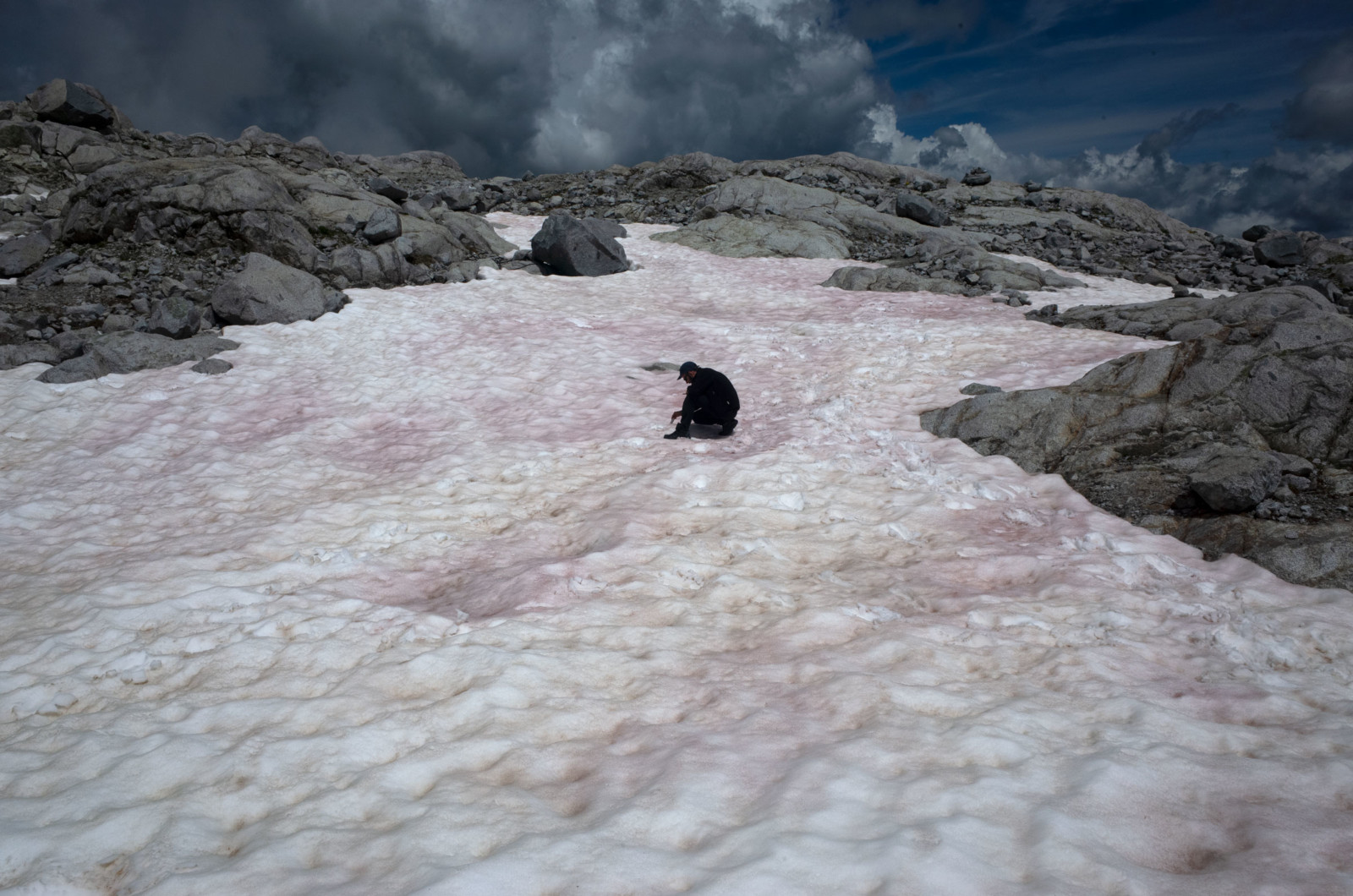
Figure 1 – Research activities on the Zebrù glacier (July 2020) [Credit: Francesca Ferrari]
“Be thou as chaste as ice, as pure as snow”. Hamlet, Act 3 Scene 1 (W. Shakespeare)
Snow and ice are not always as pristine as one may think. If you have ever walked on a glacier or on a snowfield during summer, you might have already noticed that. In fact, both snow and ice are often darkened by impurities. In this blog post, you will learn about the main processes leading to ice and snow darkening, thus promoting their melt.
While walking on snow and ice, one may notice some coloration or darkening of their surface. Often overlooked, this phenomenon is actually of scientific importance. Indeed, the darker an object, the more it will absorb solar radiation, thus enhancing its warming with respect to brighter surfaces. Everyone experienced this “albedo effect” while wearing a black or a white shirt during summer. In the case of snow and ice, the increase of absorbed radiation is involved in triggering and promoting the melt. In this context of climate change and glacier retreat, accurately identifying all processes that lead to the melting of snow and ice is therefore important.
Some recent history
The study of the “darkening” of ice and snow can be dated to around 1870, when the Swedish-Finnish explorer Adolf Nordenskioeld first identified a dark material on the Greenland ice sheet. Nordenskioeld gave a name to this mysterious material: cryoconite (actually he named it kryokonite) by combining the Greek terms κρύον (cold) and κόνις (dust). Cryoconite is a dark sediment composed of organic (~20%) and inorganic (~80%) matter that forms in the melting zones of alpine glaciers and on the margins of polar ice sheets. The explorer made several hypotheses regarding the origin of these deposits, including a possible “cosmic” origin. In 1896, few years after the Nordenskioeld’s description, cryoconite was also identified in the European Alps by Dr. Piero Giacosa during an expedition at the Monte Rosa massif. He referred it as “a fine, black, soot-like, light dust, lying at the bottom of lilliputian wells closely spread over the surface of the ice”. We now know that cryoconite forms as the result of the interaction between the mineral debris present at the glacier surface and a variety of living organisms, in particular unicellular algae.
What darkens glacier ice?
Cryoconite is the most common impurity that is found on the surface of bare ice, where snow has completely melted away. Given its dark color – related to the high organic matter content – cryoconite has the ability to “darken” the surface of the ice (see Figure 1) and thus increase its melting. This is the reason why glaciologists are so interested in this peculiar sediment, but they are not alone: cryoconite hosts algae, fungi, bacteria, small animals and is thus considered a hot spot by biologists. The interest on cryoconite is also related to its ability to concentrate radioactive species (see this post to know more) and other pollutants like few other environmental matrices.
But what kind of organisms is present in cryoconite? The conditions of the supra-glacial environment are particular and not very hospitable for living organisms: low temperature, high solar radiation, strong seasonal oscillations, these are only some of the extreme features which characterize that context. The organisms adapted to them are called psychrophiles, a category of extremophiles that survive in inhospitable environments such as ice and snow. Among them, one of the most common is an alga of the class of Zygnematophyceae called Ancylonema nordenskioeldii (in honor of the aforementioned explorer). The dark purple color of this species is due to the photoprotective pigments developed by the algae themselves in order to be shielded from the strong solar radiation that irradiates the surface of glaciers during summer. Of course, this color decreases the albedo of the ice and intensifies its melting. This biological darkening has been recently studied both in polar and alpine regions and is known as “bio-albedo feedback”.

Figure 2 – Cryoconite sampling at the Zebrù glacier (July 2020). [Credit: Francesca Ferrari]
The surface of melting glaciers can also be darkened by fine and coarse debris coming from lateral moraines and periglacial environments (Figure 3). This darkening effect can as well increase the melt rate of glaciers. In addition, when a large amount of mineral material is present on the surface of glaciers, the formation of cryoconite is enhanced, further promoting melting. Evaluating the impact of surface darkening on the mass balance of glaciers can thus become quite complex.
Another source of supra-glacial mineral debris that darkens glaciers is deep ice. In the terminal region of glaciers, where melting is strong and ice is relatively thin, it is not uncommon to observe the resurfacing of deep and dusty ice layers from beneath the glacier, with strong impacts on the reflectivity of ice. The colour of this debris is related to mineralogy (meaning the colour of the minerals it contains) and may also influence the absorption of radiation and the surface melting of ice.

Figure 3 – Fine and coarse debris covering the ablation area of the the Zebrù glacier (July 2020). White bars refer approximately to 10 cm. [Credit: Francesca Ferrari]
What darkens snow?
Snow can be polluted by different types of impurities such as mineral dust and algae. Several studies from Western US have been analysing the impact of mineral dust on snow radiative properties, using both remote sensing and snow modelling. Mineral dust can impact snow optical properties also in Europe, giving an orange hue to snow fields. In particular, in the European Alps it has been estimated that Saharan dust can anticipate snow melt up to one month, and it is likely involved in avalanche triggering (Figure 4). The impact of mineral dust on snow is strongly dependent on the timing and intensity of deposition events from the atmosphere.

Figure 4 – A slab avalanche (visible on the left, just below the snowy summit) reveals a dusty snow layer, it is related to the occurrence of a Saharan dust deposition event. Such events in the Alps (here in the Disgrazia range, Central Alps) favor the development of discontinuities in the snowpack, thus triggering avalanches (June 2013) [Credit: Giovanni Baccolo].
Snow algae (Figure 5) can also induce a red or green coloration of snow during spring and summer (Figure 6). The blooming of these snow algae (also known as watermelon snow) has been studied both in alpine and polar regions. While several species of algae can develop on melting snow, the most common is Sanguina nivaloides (renamed recently from Chlamydomonas nivalis) that produces red and magenta coloration of snow. The pigmentation of these algae decreases the albedo of snow and increases its surface liquid water content leading to a feedback mechanism. Indeed, liquid water is fundamental for these cryophilic algae to grow and its presence favours its flourishing.

Figure 5 – Cells of snow algae found in the Alps during summer 2020. Samples were kindly collected by Mirco Bonacorsi [Credit: Pierino Bigoni]

Figure 6 – Snow sampling in snow fields in the Alps during a snow algae blooming event. Different shades of red (snow algae) and ocher (mineral dust) are visible on the snowpack (July 2020). [Credit: Francesca Ferrari]
Future perspectives
Further research is needed to decouple the effect of different impurities in the cryosphere, so as to fully understand their role on the mass-balance of glaciers and on the evolution of snow cover. A great help is actually coming from space, since satellites provide us with a huge amount of high quality data in terms of spatial, spectral and temporal resolution, which improve our ability to describe and predict the impact of such impurities on snow and ice. But we cannot rely on remotely sensed data only. In fact, we also need field spectroscopy data (i.e. accurate measurements of surface reflectivity) and information about the composition of impurities; this is essential in order to properly validate satellite retrievals.
Future research efforts will also focus on the ecology of psychrophiles organisms such as snow and glacier algae. We still know little about their life cycles, the environmental factors leading to their blooming, their interactions with other type of light-absorbing particles (e.g. mineral dust), and the possible link between the frequency of these processes and global climate change.
The science of snow and ice darkening is rather new among Cryospheric Sciences. It may become more relevant in the future since climate change is expected to alter winter precipitation (↓) and spring-summer temperatures (↑). These latter variables are strongly connected to the availability and distribution of organic and inorganic particles that reduce the albedo of snow and ice, which explains why these processes are getting more and more attention from the scientific community.
Further reading
- Di Mauro, B., Baccolo, G., Garzonio, R., Giardino, C., Massabò, D., Piazzalunga, A., Rossini, M., and Colombo, R.: Impact of impurities and cryoconite on the optical properties of the Morteratsch Glacier (Swiss Alps), The Cryosphere, 11, 2393–2409, https://doi.org/10.5194/tc-11-2393-2017, 2017.
- Di Mauro, B., Garzonio, R., Rossini, M., Filippa, G., Pogliotti, P., Galvagno, M., Morra di Cella, U., Migliavacca, M., Baccolo, G., Clemenza, M., Delmonte, B., Maggi, V., Dumont, M., Tuzet, F., Lafaysse, M., Morin, S., Cremonese, E., and Colombo, R.: Saharan dust events in the European Alps: role in snowmelt and geochemical characterization, The Cryosphere, 13, 1147–1165, https://doi.org/10.5194/tc-13-1147-2019, 2019.
- Di Mauro, B., Garzonio, R., Baccolo, G. et al. Glacier algae foster ice-albedo feedback in the European Alps. Sci Rep 10, 4739 (2020). https://doi.org/10.1038/s41598-020-61762-0
Edited by Giovanni Baccolo and Violaine Coulon
 Biagio Di Mauro is a researcher at the Institute of Polar Sciences, National Research Council of Italy. He studies the optical and thermal properties of snow and ice through satellite images, drones and field spectroscopy. He tweets as @DiMauro_b.
Biagio Di Mauro is a researcher at the Institute of Polar Sciences, National Research Council of Italy. He studies the optical and thermal properties of snow and ice through satellite images, drones and field spectroscopy. He tweets as @DiMauro_b.
Contact Email: biagio.dimauro@cnr.it




